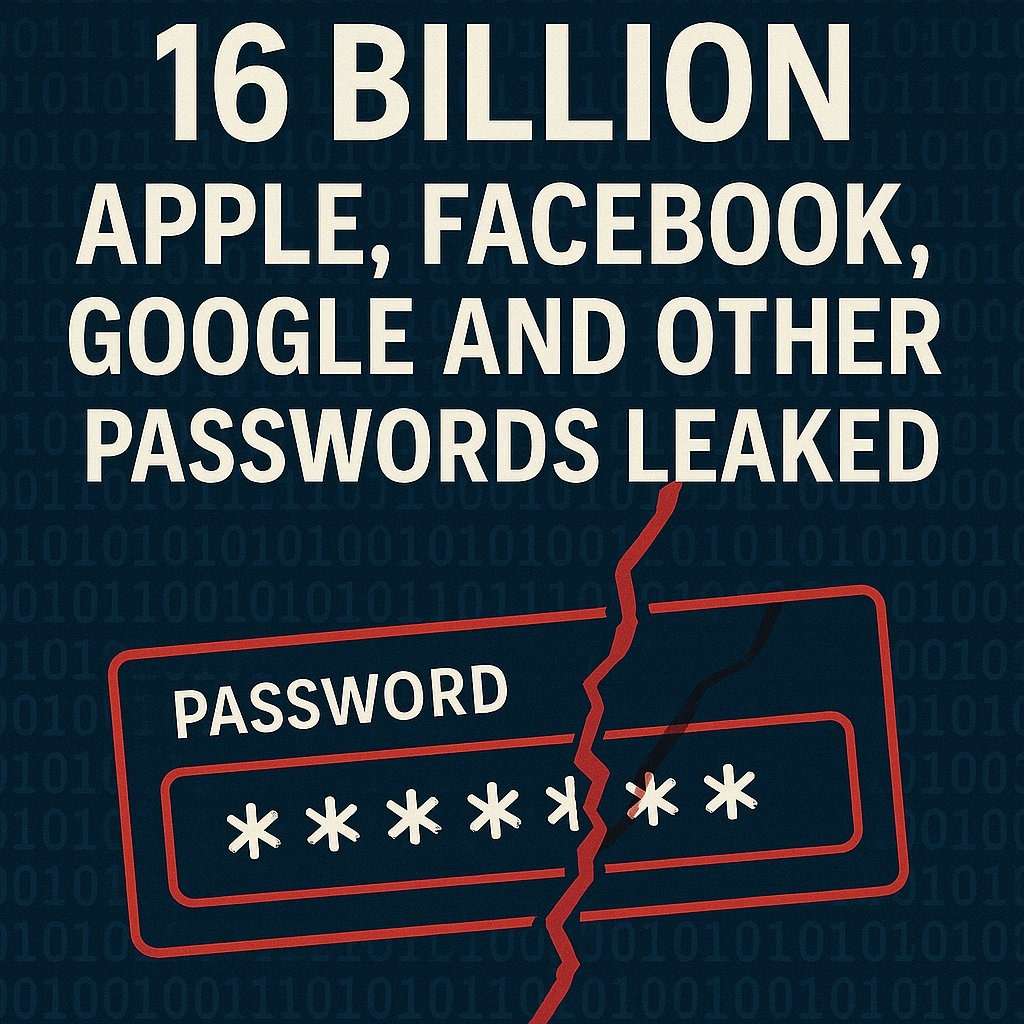The Largest Password Leak in History
This isn’t just another data breach. Security experts have uncovered what may be the biggest password leak ever—16 billion login credentials stolen from Apple, Facebook, Google, GitHub, Telegram, and government systems.
The data comes from 30 separate breaches, with some files containing over 3.5 billion passwords each. What makes this different? Hackers have been quietly trading this information for years. Now it’s all out in the open, putting millions at risk.
Where Did All These Passwords Come From?
1. Malware That Steals Everything
Most credentials were stolen by “infostealers” viruses that record:
Every password you type
Credit card numbers
Login cookies that keep you signed in
These infections often come from:
Fake software downloads
Phishing emails
Hacked websites
2. Careless Data Storage
Some passwords were found on unsecured servers that companies left unprotected. Others were pieced together from older breaches like the LinkedIn and Yahoo hacks.
3. Recycled and Fake Data
Not all 16 billion passwords are new. Many are:
Old passwords slightly changed
The same login used across multiple sites
Fake entries hackers use for testing
Even if only 1% work, that’s 160 million vulnerable accounts.
Is Your Information in This Leak?
Check These Services First:
Social media (Facebook, Instagram, Twitter)
Email (Gmail, Outlook, Apple)
Messaging (Telegram, WhatsApp)
Banking and government logins
How to Check Your Accounts:
-
Visit Have I Been Pwned and enter your email
-
Use Google’s Password Checkup in Chrome settings
-
Check your password manager’s breach alerts
What Hackers Can Do Right Now
1. Break Into Multiple Accounts
If you reuse passwords, hackers will try your email/password combo on dozens of sites.
2. Bypass Passwords Completely
Some leaks include active login sessions, letting hackers in without your password.
3. Steal Money and Identities
Drain bank accounts
Open credit cards in your name
Lock businesses out of their systems
Protect Yourself in 3 Steps
Step 1: Lock Down Logins
Turn on two-factor authentication (2FA) everywhere
Change passwords for email, banking, and social media
Use a password manager to create strong, unique passwords
Step 2: Secure Your Devices
Run malware scans with Malwarebytes or Windows Defender
Update all software immediately
Disable Office macros unless absolutely needed
Step 3: Stay Alert
Monitor bank and credit card statements
Watch for suspicious emails
Consider a credit freeze
Why This Keeps Happening
-
People still use terrible passwords (“123456” remains most common)
-
Companies are slow to fix security issues
-
Hacking has become a billion-dollar business
Final Warning
This leak proves one thing: Your data is already out there. The only question is whether you’ll act before hackers do.
What to Do Today:
Check your accounts using the tools above
Enable 2FA on every important account
Stop reusing passwords immediately
Don’t wait until you’re hacked to take this seriously. Act now.
Discover more from CyberAwareHub
Subscribe to get the latest posts sent to your email.

